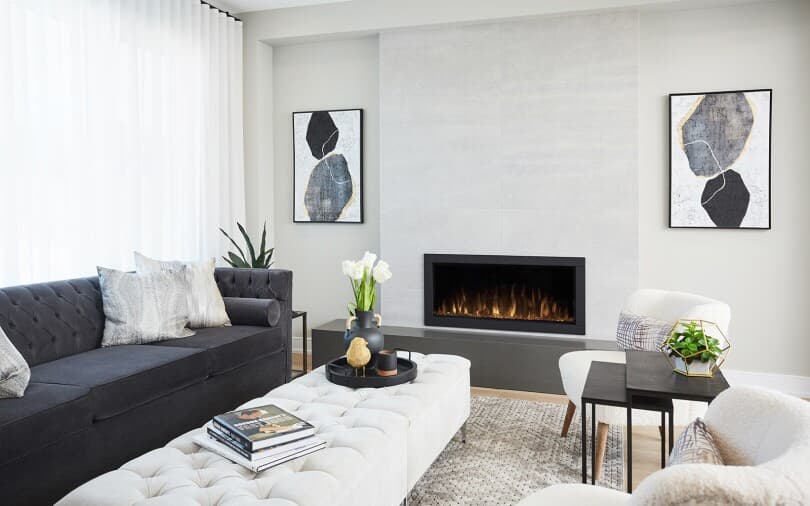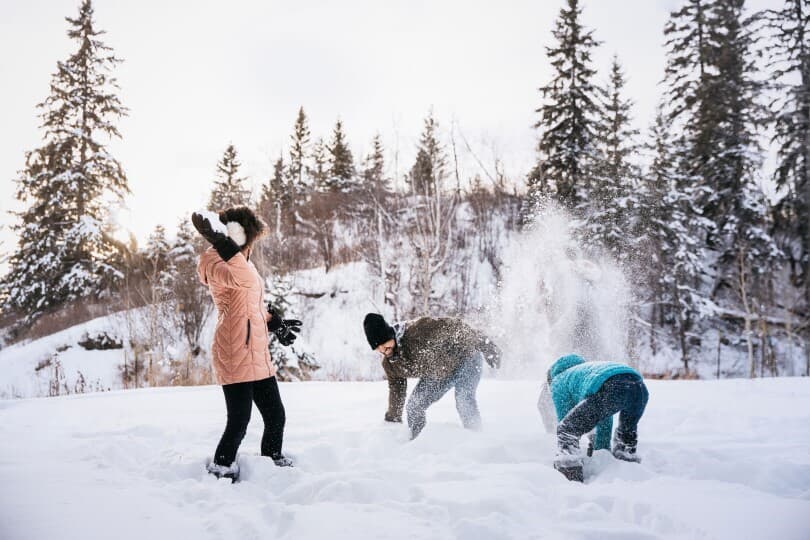How to Winterize Your Home

While there isn’t a home equivalent of a cozy, warm sweater, there are things you can do to keep everything running and working in tip-top shape. Winterizing a house not only keeps your home warm and dry throughout the season, it can save you from potentially expensive and destructive problems in the future.
These simple ways to winterize a house will help you get your home ready for the winter weather ahead.
1. Prep the Plumbing
Below-freezing temperatures can wreak havoc on your house – both inside and out. The first thing to know is that water damage – particularly damage linked to frozen and burst pipes – is a top culprit for homeowners’ insurance claims in the winter.
Protect Indoor Pipes
Pipe insulation, which you can easily install yourself around any exposed copper or PVC water pipe, costs as little as 50 cents per linear foot. Use it under sinks, in the attic and crawl spaces, and on pipes along exterior walls. Spend extra time and attention in the basement as this is where many burst pipes seem to occur.
Drain Your Water Pipes
Drain the water from your outdoor faucets, garden hoses, and air conditioner. Irrigation systems need to be blown out with clean air so that water doesn’t accumulate and crack the pipes when the temperatures drop below zero.
Know Your Water Shut-Offs
If the worst happens and a leak or burst pipe occurs, you need to know where and how to turn off the water quickly. Make sure everyone in your household knows how to turn off the water at the source of the problem as well as the main water valve.
Point Drain Pipes Away
Water collecting near your home’s foundation can pose a lot of risk. Make sure your drain pipes can drain properly and direct water away from your foundation. Water expands when it freezes; therefore, if it seeps into the concrete of the foundation through a crack and solidifies, there’s a risk the crack will become even bigger, resulting in worse problems in the future.

2. Heat Things Up
Whether you envision cozy nights by the fire or your family snuggled together under a blanket, the best way to combat the cold is with heat.
Service Your Furnace and Chimney
Before the first frost hits, run your furnace to ensure everything is working properly. There may be a strange smell initially, but it should dissipate quickly. If it lingers, have a professional perform a check of your home’s heating system. Furnace tune ups typically include vacuuming the vents and other heating components as well as changing the filter.
Have your fireplace and chimney serviced and inspected annually. Make sure the inspector examines the condition of the brick to prevent water from leaking in as well as the cap to keep heat-seeking animals out. Check the damper to ensure it opens and closes fully and can be locked in either position.
Add Insulation to the Attic
Spending money to insulate your attic can be a larger investment upfront, but will save you money in the long run. You’ll keep the home’s heat in the living areas instead of it drifting up to the attic, and by keeping the attic cooler, you may prevent ice dams from forming on your roof and causing damage.
Swap Window Coverings
Change your light and breezy summer curtains for heavier winter-friendly drapes to help prevent heat loss. Not only do they help create a cozy home in cold weather, they offer practical benefits like extra insulation that result in a lower heating bill.
Install a Smart Thermostat
Obviously, the best way to combat the cold is with heat and turning up your thermostat is an easy way to do this. Choosing a smart thermostat allows you to adjust your home’s temperature remotely. Not only is this great to do before your evening commute home, it also gives you control if you’re out of town. Some homeowners’ insurance will void your policy if you leave your home unattended without heat for an extended period of time as the risk for frozen pipes or other winter-weather-related issues increase.
3. Seal the Drafts
If you’re trying to keep your home warm, you don’t want the exterior cold air coming inside or you heat escaping out. Do a thorough review of your home to keep drafts to a minimum this winter. Windows, doors, and your roof are great starting points for examination. You’ll also want to thoroughly inspect your basement and attic for any areas that need repair.
Draft-Proof Inside and Out
One of the easiest ways to winterize a house is by draft-proofing. Identify where cold air may be coming in, and reduce or eliminate the source of the problem. Fit brush-style draft excluders to the bottom of doors, attach weather stripping around window frames, and caulk baseboards if there are any gaps.
Having an open chimney is comparable to leaving a window open all the time. To reduce the effects of this, consider investing in a removable chimney draft excluder, usually made out of felt or wool. Rather than a permanent chimney balloon, the excluder can be lodged in and easily taken out when a fire is needed. This will block 94% of airflow drafts and help keep your home warm and cozy.
Check Your Roof
Start with a basic visual assessment on your own. Get out the ladder or stand across the street and use binoculars to see if there are any immediate areas of concern. Check for any dislocated tiles, excessive moss or leaves, or any damage. If you have any worries, ask an experienced roofer to conduct a more thorough inspection.
While you’ve got the ladder out, make the most of the opportunity to clean your gutters and unblock your drains. Removing leaves and debris prevents water from overflowing and saturating external walls.

Getting your home ready for winter can seem like a big chore, but it’s a necessary step to keep your heating costs down and reduce the risk for major damage.
When you buy a house from Brookfield Residential, you can be assured you’re getting a high-quality home built with sustainable materials and designed for the highest levels of performance. With energy-efficient appliances, proper insulation, Low-E windows, and so much more, a Brookfield Residential home ensures you’ll be comfortable all year round.
Explore where we build in the GTA and contact us when you’re ready to learn more.
